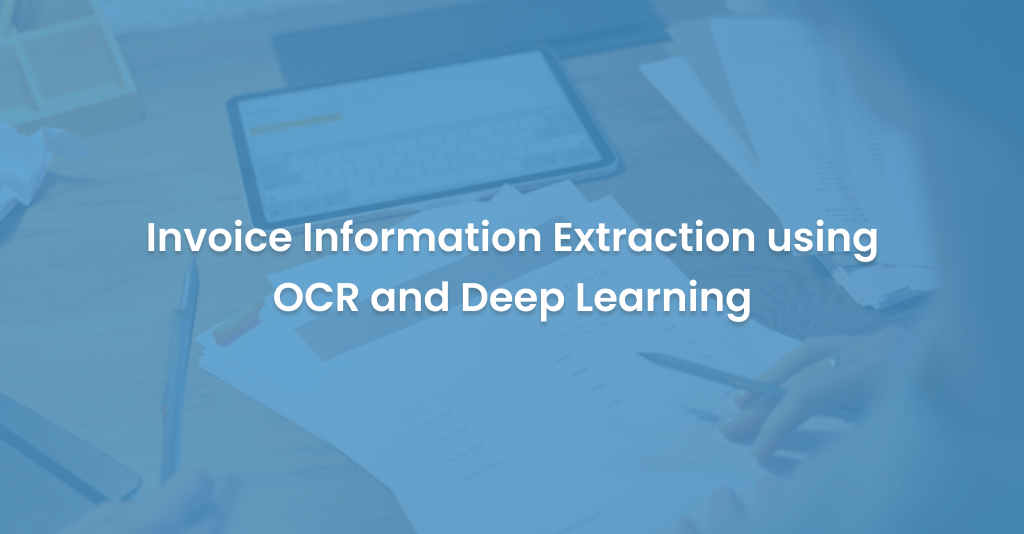The traditional way of invoice includes manual data entry in which the individuals have to input the detail of the invoice into the company’s accounting system. The traditional method of invoicing is labour intensive and prone to errors and often can lead to financial discrepancies and delays thus becoming unsustainable for the business growth. With the advent of Optical Character Recognition (OCR) and Deep Learning technologies, businesses now have the opportunity to use invoice automation using AI, which will significantly improve the efficiency and accuracy of the business.
By leveraging the OCR and Deep learning technologies, business now can automate the invoice processing which will reduce the manual labor thereby minimizing the errors, and speeding up the processing time. Let’s get into the blog to explore about the invoice data extraction from invoice using AI using OCR and Deep learning.
What is the Need for Automated Invoice Processing? Know Here!
Reduce the Manual Errors
Improve the Accuracy
Save the Processing Time
Minimize the Operational Costs
Understanding Optical Character Recognition (OCR) and Its Role in data Extraction from Invoice Using AI
Optical Character Recognition (OCR) technology will enable converting different types of documents like scanned paper documents, PDFs, or images that are captured by a digital camera. OCR will convert the documents in to an editable and searchable data. In the context of invoice processing, Optical Character Recognition technology can automatically read and perform data extraction from invoice using AI like that of dates, vendor names, and the description of the items.
How will An Optical Character Recognition (OCR) Work? Check Here!
Pre-processing the image
Detection of The Texts
Recognizing the Characters
Post-Processing Process
Why Deep Learning Techniques Are to Be Used for Data Extraction?
Extracting information from images/pdfs is an age-old problem of the Artificial Intelligence (AI) world. Though the latest achievements made in the field of invoice automation using AI have seen tremendous success, extracting the text and data from these invoices in the form of images or PDFs still remains a challenge. Historically, we have relied on paper invoices to process payments or support accounts. However, this requires manual interference and remains a time-consuming process.
Typically, large organizations have several vendors, and manually processing an influx of invoices is a tedious process. This data extraction from invoice using AI process is also prone to errors and consumes a lot of time and resources leading to outstanding payments and reworking on the erroneous invoices. To combat these issues, deep learning along with OCR is used for invoice data extraction to automate the business processes.
Deep Learning: Enhancing OCR Capabilities
Key Deep Learning Techniques for Invoice Information Extraction:
Convolutional Neural Networks (CNNs)
Transformer Models
Recurrent Neural Networks (RNNs)
Attention Mechanisms
How Can You Extract Data with Deep Learning?
Digitize invoices
Extract data
Create database
Building an Invoice Information Extraction System
Data Collection and Annotation
Model Training
Model Evaluation
Integration with OCR
Post-processing
Extracted data from data extraction from invoice using AI is validated and formatted to ensure accuracy and consistency. Post-processing may involve rules-based approaches or additional machine learning models to refine the extracted information.
Benefits of Invoice Automation Using AI Processing
Efficiency
Speed
Accuracy
Cost Savings
Scalability
Data Consistency
Challenges and Solutions
Quality of Input Data
Variability in Invoice Formats
Integration with Existing Systems
Future Trends
The future of invoice automation using AI is promising, with several trends emerging:



